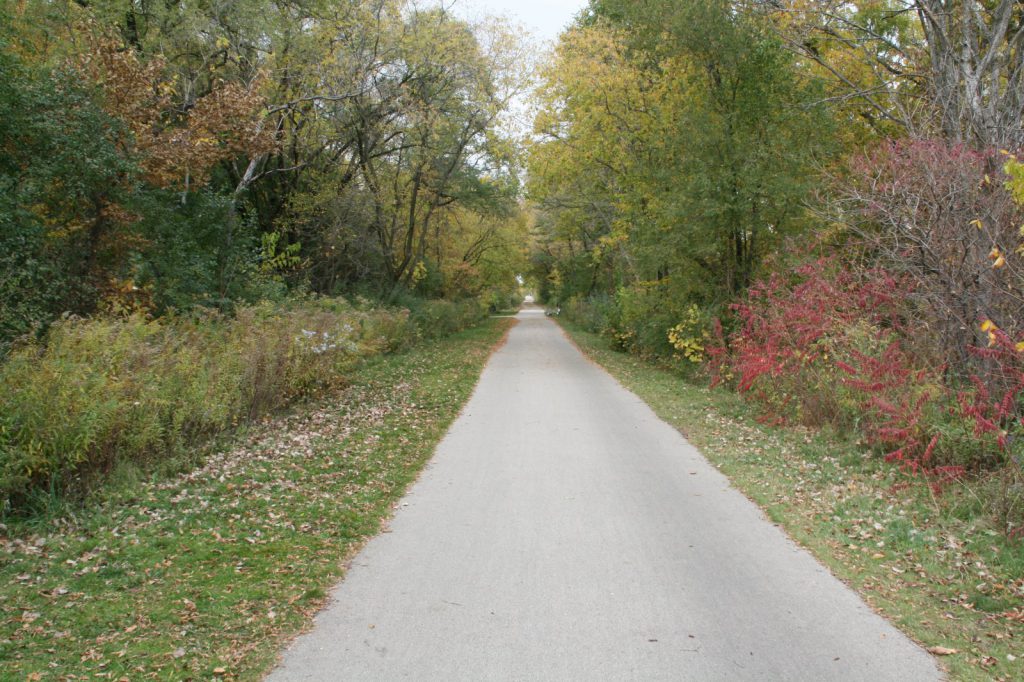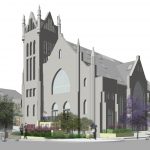Parks Planning 10 Miles of New Trails by 2026
Parks sets ambitious goal, plans to focus trail development on "historically underserved communities."

Oak Leaf Trail – Zip Line. Photo taken October 20th, 2020 by Jeramey Jannene.
Milwaukee County Parks announced Thursday a plan to add 10 miles of new trails over the next two years.
“The initiative aligns with Milwaukee County’s broader health and racial equity goals, providing safe alternatives to roads with reckless driving, and prioritizing trail development in historically underserved communities,” the department said in a statement announcing the campaign Thursday.
Ten miles in two years in an ambitious goal for trail creation. Considering the number of miles added since 2007 — when the department last updated its trails plan — Parks has averaged approximately 1.5 miles of trail a year. Since that date, the county’s expansive, and much beloved, Oak Leaf Trail network has grown from 108 miles to more than 135.
This rate of trail growth is already no small feat. A single trail is often a long-term project that can take decades to bring to fruition, said Amelia Kegel-Bosco, vice-president and co-owner of Wheel & Sprocket , at an event for the nonprofit Rails to Trails Conservancy this month
“Our dad [Wheel & Sprocket Founder Chris Kegel] used an analogy: like growing a tree from a seed,” Kegel said. “You plant a trail seed and 20-30 years later you have a trail.”
Parks currently has six trail projects in various stages of development that will add up to six miles of new trails. The department will need to develop four more miles of trail during the next two years to meet its goal, a parks spokesperson told Urban Milwaukee.
The trail campaign is designed to align with the county’s strategic plan to achieve racial equity and will focus trail development on communities that have, historically, been overlooked for investment.
“This project reflects our unwavering dedication to providing equitable access to recreational spaces, addressing disparities in historically underserved communities, and promoting environmental sustainability,” Parks Director Guy Smith said. “By adding 10 miles of new trails by 2026, we aim to create a more connected and accessible trail network that enhances the health and wellbeing of our residents while preserving the natural beauty of our parks.”
The trail campaign is, in part, a response to growing support and enthusiasm for trails since 2020, according to the department. The initiative seeks to capitalize on this and further promote trails and involve the community in their development and maintenance.
In that time, the department has begun assertively developing new trails in creative ways that also save the county money: road-to-trail conversions. Most of the trails currently being developed by Parks are road-to-trail projects. For these projects, Parks targets parkways that duplicate connections to the street grid already provided by nearby streets.
Along with providing a safer transportation option for bicyclists and pedestrians, the projects are expected to save the county money on long-term maintenance. Roadways are significantly more expensive to maintain and rebuild than trails. The projects also go one step further and support the department’s policy of reducing the system’s paved surfaces wherever possible. Paved surfaces contribute to stormwater runoff and the urban heat island effect, and require long-term maintenance that consumes much of the department’s infrastructure funding. In 2023, approximately half of the department’s infrastructure budget went to roads and parking lots.
As the trail campaign kicks off, the department is also preparing to update the countywide trail plan. That planning effort will incorporate the work done on both the trail campaign and the Northwest Side Trail Connections Plan, which Parks completed in 2023. All three projects have incorporated the county’s racial equity goals into the trail planning process.
“This initiative is not just about building trails; it’s about fostering community, improving public safety, and ensuring that everyone, regardless of background or socioeconomic status, can enjoy the numerous benefits that our parks and trails have to offer,” Smith said.
If you think stories like this are important, become a member of Urban Milwaukee and help support real, independent journalism. Plus you get some cool added benefits.
MKE County
-
Prosecution Rests Case in Dugan Trial
 Dec 17th, 2025 by Graham Kilmer
Dec 17th, 2025 by Graham Kilmer
-
Chief Judge Questioned About ICE Policy, Texts, Emails in Dugan Trial
 Dec 17th, 2025 by Graham Kilmer
Dec 17th, 2025 by Graham Kilmer
-
Fellow Judge Testifies in Dugan Case
 Dec 16th, 2025 by Graham Kilmer
Dec 16th, 2025 by Graham Kilmer
Transportation
-
Congestion Pricing Cuts Air Pollution in New York City
 Dec 14th, 2025 by Jeff Wood
Dec 14th, 2025 by Jeff Wood
-
FTA Tells Milwaukee to Crack Down on Fare Evasion — Even Where Fares Don’t Exist
 Dec 12th, 2025 by Graham Kilmer
Dec 12th, 2025 by Graham Kilmer
-
Will GOGO’s Bus Service Ever Get Going?
 Dec 9th, 2025 by Jeramey Jannene
Dec 9th, 2025 by Jeramey Jannene





















